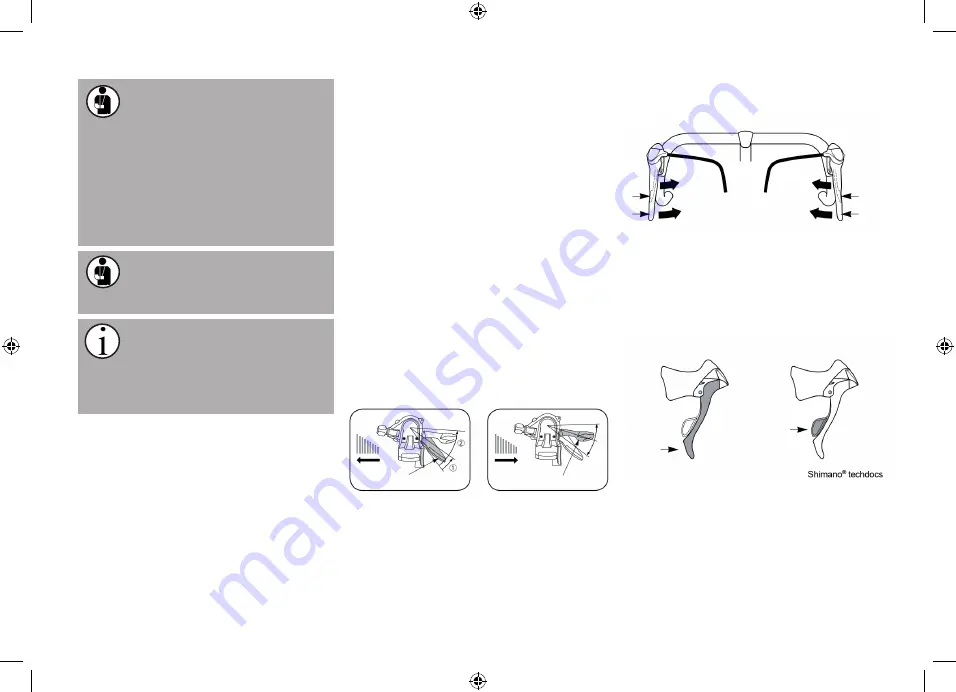
32
Brakes are vital to your safety. You
should therefore maintain them on a
regular basis. This requires specialist
knowledge and tools. Allow your specialist re-
tailer to do this type of work on your bicycle!
Work that is improperly carried out endangers
your safety on the bicycle!
No oil-bassed liquids should ever be ap-
plied to brake pads, rim brake surfaces,
brake shoes or brake discs. This reduce the
effectiveness of the brakes.
After any work on the brake system,
perform at least one test braking ac-
tion on safe, traffic-free terrain before
participating in road traffic.
Have the brake fluid replaced on a
regular basis. Check the brake shoes
regularly and have them replaced
when they are worn out.
You can get more information in the brake
manufacturer’s operating instructions.
Gear system
This operation manual describes the use of com-
mon commercial gear components on a bicycle
as an example. If your components are different,
you will find specific information in the respec-
tive operating manual or on the website of the
manufacturer. If you have any questions about
assembling, maintaining, setting up or operating
the gears, please contact your bicycle specialist
retailer.
Use the shifter to change gears. Changing
the gears will increase or decrease the force
or speed of the bike as needed. In lower, eas-
ier gears, you can easily ride uphill and lower
physical strain. In higher gears, which are harder
to peddle in, you can reach higher speeds and
pedal at a lower cadence. You should generally
aim at riding the bike at a higher cadence and in
lower gears.
Modern bicycles can be equipped with a variety
of different gear systems.
There are various options:
• Chain gear:
• Hub gear:
• Combined chain and hub gear systems.
These gear systems can be operated with differ-
ent levers.
Gear lever, STI type, for example a Shimano lever
The gear lever can be operated as shown in this
example:
Lever (A): Changing to a larger rear sprocket.
Lever (B): Changing to a smaller rear sprocket.
Lever (a): Changing to a larger chain ring.
Lever (b): Changing to a smaller chain ring.
All levers return to their initial position as soon as
they are released.
Racing bike gear levers made by SRAM are op-
erated in a different way, for example the RED
shifter:
The gear lever behind the right brake lever
switches the chain on the rear sprockets. Activa-
tion with short lever movement switches to small-
er sprockets and long lever movement switches
to larger ones.
Switching from a small to a
larger sprocket (Lever A)
Switching from a large to a
smaller sprocket (Lever B)
Lever A
Lever B
Lever (A) starting position
Lever B
Lever b
Front
Lever A
Lever a
Lever (B) with two-way activation
IDEAL MANUAL 2016_eng.indd 32
6/27/16 11:39
















































